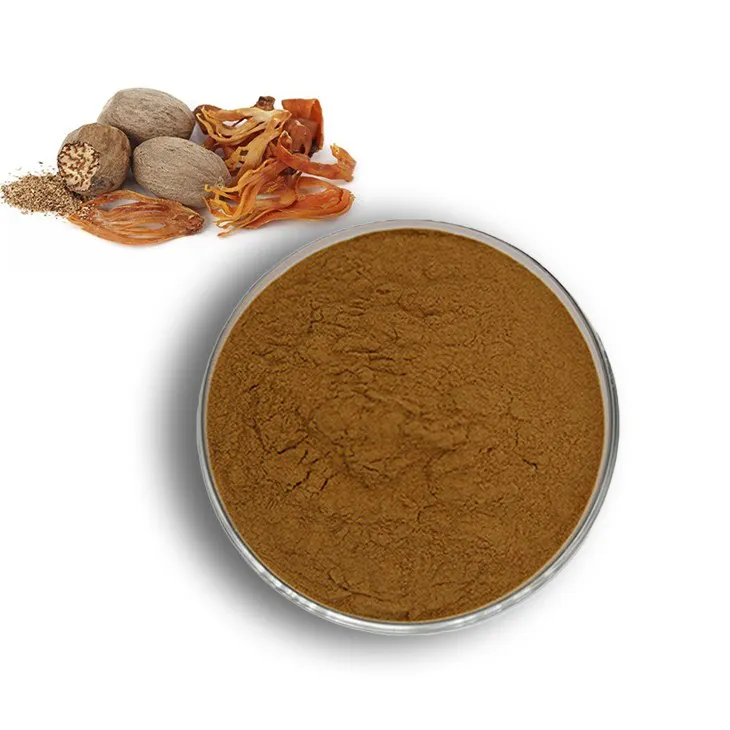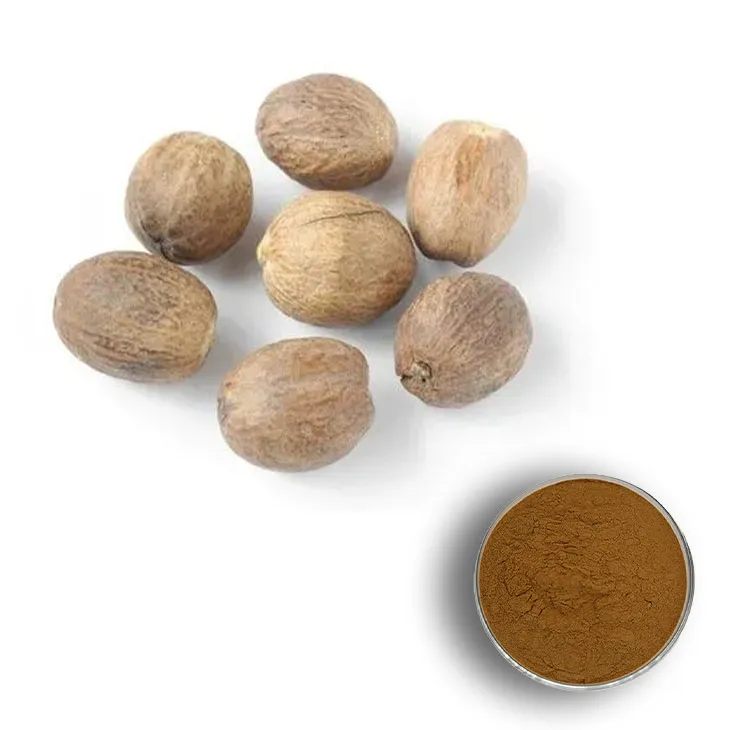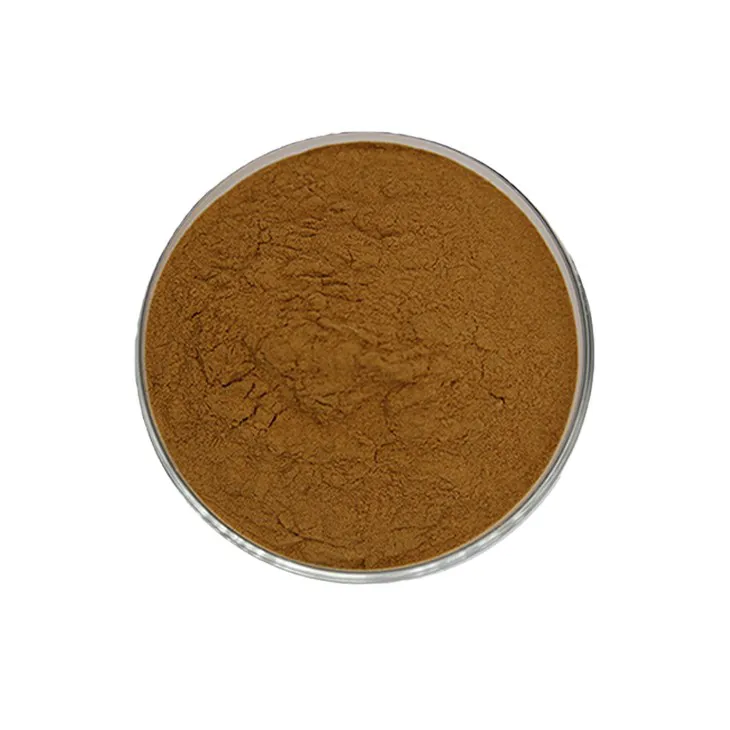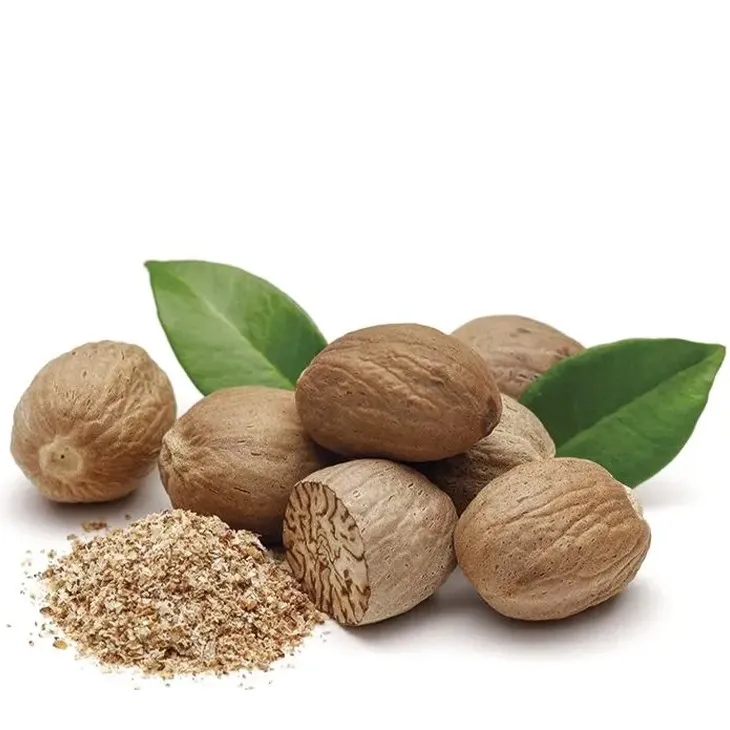- 0086-571-85302990
- sales@greenskybio.com
The best nutmeg extract in nature.
2024-11-30

1. Introduction
Nature has bestowed upon us a remarkable gift in the form of Nutmeg Extract. This extract, sourced from the nutmeg seed, has a rich and multi - faceted history. It has long been a staple in both the culinary and traditional medicine arenas. Nutmeg Extract has gained significant popularity, especially with the growing interest in natural products. Its allure lies not only in its unique flavor but also in its potential health benefits.

2. The Origin of Nutmeg
2.1 Geographical Distribution
Nutmeg is native to the Spice Islands in Indonesia. However, it is now also cultivated in other tropical regions around the world. Countries such as Grenada in the Caribbean have also become significant producers of nutmeg. The ideal climate for nutmeg cultivation is warm and humid, with well - drained soil.2.2 Nutmeg Tree and Seed
The nutmeg tree, scientifically known as Myristica fragrans, is an evergreen tree. The nutmeg seed is encased within a fruit. The outer part of the fruit is used to produce mace, while the seed itself is the source of nutmeg. When the fruit ripens, it splits open, revealing the seed covered with a red aril, which is the mace.
3. The Extraction Process
3.1 Traditional Extraction
Traditionally, Nutmeg Extract was obtained through simple methods. The nutmeg seeds were ground into a powder. Then, solvents such as alcohol or water were used to extract the active compounds. This process was often time - consuming, but it was effective in obtaining a crude form of the extract.3.2 Modern Extraction Techniques
In modern times, more advanced techniques are employed. Supercritical fluid extraction, for example, uses carbon dioxide under supercritical conditions. This method has several advantages. It is more efficient in extracting a wider range of bioactive compounds. It also produces a purer extract with fewer impurities compared to traditional methods. Another modern method is microwave - assisted extraction, which reduces the extraction time significantly.
4. Bioactive Compounds in Nutmeg Extract
4.1 Myristicin
Myristicin is one of the most important bioactive compounds in nutmeg extract. It has been the subject of numerous scientific studies. Myristicin has shown strong antioxidant properties. It helps in neutralizing free radicals in the body, which are known to cause oxidative stress. Oxidative stress is associated with various diseases, including cancer, heart disease, and neurodegenerative disorders. Additionally, myristicin has demonstrated anti - inflammatory effects. It can reduce inflammation in the body, which is beneficial for conditions such as arthritis.4.2 Eugenol
Eugenol is another compound present in nutmeg extract. It has a characteristic spicy aroma. Eugenol has analgesic properties, meaning it can help relieve pain. It also has antimicrobial properties, which can be useful in fighting against certain bacteria and fungi. In the field of dentistry, eugenol is sometimes used in dental cements and fillings due to its analgesic and antimicrobial effects.4.3 Safrole
Safrole is a component of nutmeg extract, although it is present in relatively small amounts. It has been studied for its potential pharmacological activities. However, it should be noted that safrole has been associated with some health concerns at high doses. Therefore, proper regulation is necessary to ensure the safety of nutmeg extract products.
5. Culinary Applications of Nutmeg Extract
5.1 In Sweet Dishes
Nutmeg extract imparts a warm, spicy flavor that is highly prized in sweet recipes. It is a common ingredient in desserts such as pumpkin pie, custards, and puddings. Just a small amount of nutmeg extract can enhance the overall flavor profile of these dishes, adding a depth and complexity that is hard to achieve with other spices.5.2 In Savory Dishes
In savory cooking, nutmeg extract is also widely used. It is a key ingredient in many meat - based dishes, especially those with a creamy or rich sauce. For example, it can be added to béchamel sauce, which is often used in lasagna or other pasta dishes. It also pairs well with vegetables like spinach and mushrooms, adding a unique flavor dimension to these dishes.5.3 Beverages
Nutmeg extract can be used in beverages as well. It is sometimes added to warm drinks like mulled wine or hot chocolate. In these beverages, it provides a spicy note that complements the other flavors, creating a cozy and indulgent drink. It can also be used in some cocktails, although it is not as common as in hot beverages.6. Nutmeg Extract in Traditional Medicine
6.1 Digestive Aid
One of the long - standing uses of nutmeg extract in traditional medicine is as a digestive aid. It is believed to stimulate the digestive system, helping with issues such as indigestion, bloating, and flatulence. The compounds in nutmeg extract may interact with the digestive enzymes in the stomach and intestines, promoting better digestion.6.2 Treatment of Ailments
Nutmeg extract has also been used to treat various ailments. In some traditional medicine systems, it has been used to relieve pain, similar to the analgesic effect of eugenol. It has also been used for respiratory problems, as it may have expectorant properties that can help clear the airways. However, it is important to note that while these traditional uses have been passed down through generations, more scientific research is needed to fully understand and validate these claims.7. Health Benefits and Considerations
7.1 Potential Health Benefits
- Antioxidant Activity: As mentioned earlier, the presence of compounds like myristicin gives nutmeg extract strong antioxidant capabilities. This can help protect the body's cells from damage caused by free radicals, potentially reducing the risk of chronic diseases. - Anti - inflammatory Effects: The anti - inflammatory properties of nutmeg extract can be beneficial for overall health. Chronic inflammation is linked to many health problems, so reducing inflammation can have a positive impact on conditions such as heart disease, diabetes, and autoimmune disorders. - Digestive Health: Its traditional use as a digestive aid may have some basis in scientific fact. By promoting better digestion, nutmeg extract can contribute to a healthier gastrointestinal system.7.2 Safety Considerations
While nutmeg extract offers potential health benefits, it is important to use it safely. High doses of nutmeg can be toxic, causing symptoms such as nausea, vomiting, and dizziness. Additionally, as mentioned earlier, safrole in nutmeg extract has some associated health risks at high levels. Therefore, it is crucial to follow recommended dosages and use products that are properly regulated.8. Nutmeg Extract in the Cosmetic Industry
8.1 Skin Benefits
Nutmeg extract has been used in the cosmetic industry for its potential skin benefits. The antioxidant and anti - inflammatory properties of its bioactive compounds can be beneficial for the skin. It may help in reducing skin inflammation, which is useful for conditions like acne and eczema. It can also protect the skin from oxidative damage, which can lead to premature aging.8.2 Hair Care
In hair care, nutmeg extract can be used to improve the health of the hair. It may help in strengthening the hair follicles, reducing hair fall. It can also add shine to the hair, making it look healthier. Some hair products, such as shampoos and conditioners, may contain nutmeg extract for these beneficial effects.9. Market and Consumer Trends
9.1 Growing Demand for Natural Products
In recent years, there has been a significant increase in the demand for natural products, and nutmeg extract is no exception. Consumers are increasingly looking for natural alternatives to synthetic products, both in the food and cosmetic industries. This trend has led to a greater focus on the production and marketing of high - quality nutmeg extract products.9.2 Product Formulations
Nutmeg extract is now available in various product formulations. It can be found as a pure extract, in capsules for dietary supplements, or as an ingredient in food and cosmetic products. Manufacturers are constantly innovating to create new products that incorporate nutmeg extract in different ways, to meet the diverse needs of consumers.10. Conclusion
Nature's best nutmeg extract is truly a remarkable substance with a wide range of applications. From its origin in the Spice Islands to its use in modern kitchens, traditional medicine, and the cosmetic industry, it has a long and interesting history. The bioactive compounds in nutmeg extract offer potential health benefits, but it is important to use it safely. As consumer demand for natural products continues to grow, nutmeg extract is likely to play an even more important role in various industries in the future. Whether it is for adding flavor to a delicious dish, promoting digestive health, or enhancing the beauty of the skin and hair, nutmeg extract has much to offer.
FAQ:
What are the bioactive compounds in nutmeg extract?
One of the main bioactive compounds in nutmeg extract is myristicin. This compound has shown potential antioxidant and anti - inflammatory properties. There may also be other substances that contribute to the overall properties of the extract.
How is nutmeg extract used in the culinary world?
Nutmeg extract imparts a warm, spicy flavor to dishes. It is a favorite in both sweet and savory recipes. For example, it can be used in baking, such as in cakes and pies, to add flavor. In savory dishes, it can be added to stews, sauces, or meat dishes for an extra layer of flavor.
What are the traditional medicinal uses of nutmeg extract?
In traditional medicine, nutmeg extract has been used for digestive issues. It has also been considered as a natural remedy for certain ailments, though more research is needed to fully understand and confirm these uses.
How is nutmeg extract obtained?
Nutmeg extract is derived from the nutmeg seed. The extraction process typically involves using solvents or other methods to isolate the active components from the seed.
What makes the nutmeg extract in nature the best?
The nutmeg extract in nature is considered the best perhaps because it is pure and contains all the natural compounds as nature intended. It has a long - standing history of use in different cultures, which attests to its quality and effectiveness in various applications such as cooking and traditional medicine.
Related literature
- Nutmeg: Chemistry, Pharmacology, and Safety"
- "The Bioactive Compounds of Nutmeg and Their Potential Health Benefits"
- "Nutmeg in Culinary and Medicinal Traditions: A Review"
- ▶ Hesperidin
- ▶ Citrus Bioflavonoids
- ▶ Plant Extract
- ▶ lycopene
- ▶ Diosmin
- ▶ Grape seed extract
- ▶ Sea buckthorn Juice Powder
- ▶ Fruit Juice Powder
- ▶ Hops Extract
- ▶ Artichoke Extract
- ▶ Mushroom extract
- ▶ Astaxanthin
- ▶ Green Tea Extract
- ▶ Curcumin
- ▶ Horse Chestnut Extract
- ▶ Other Product
- ▶ Boswellia Serrata Extract
- ▶ Resveratrol
- ▶ Marigold Extract
- ▶ Grape Leaf Extract
- ▶ New Product
- ▶ Aminolevulinic acid
- ▶ Cranberry Extract
- ▶ Red Yeast Rice
- ▶ Red Wine Extract
-
Stevia Extract
2024-11-30
-
Hops Extract
2024-11-30
-
Cranberry Extract
2024-11-30
-
Andrographis Paniculata Extract Powder
2024-11-30
-
Boswellia Serrata Extract
2024-11-30
-
Garcinia Cambogia Extract
2024-11-30
-
Yohimbine Bark Extract
2024-11-30
-
Acerola Juice Powder
2024-11-30
-
Golden Seal Extract
2024-11-30
-
Citrus Aurantii Extract
2024-11-30





















